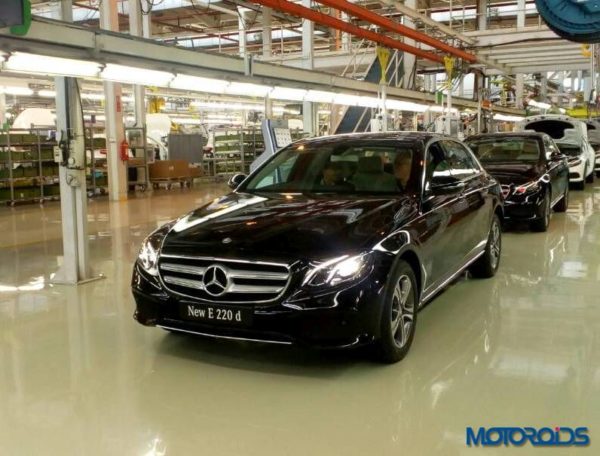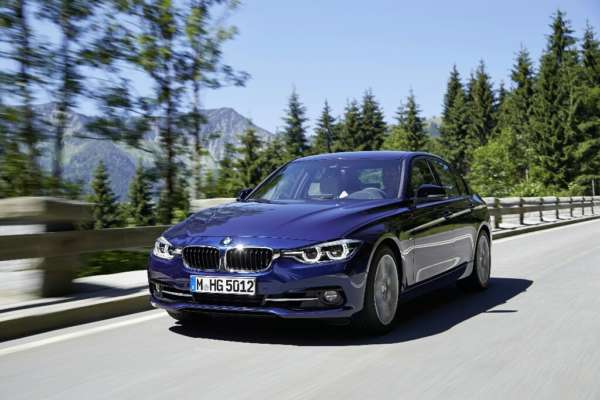The Union Cabinet recently approved a 10% hike in the Goods and Services Tax (GST) cess, applicable on luxury cars and SUVs. The proposal came in after the Council realised that the amount of tax on motor vehicles post the implementation of GST was lower, compared to the amount that applied before the 1st of July. You can read our detailed report here. Meanwhile, the industry reacted to the revised tax structure and here’s what the experts had to say:
Society of Indian Automobile Manufacturers (SIAM)
The cabinet clearance of the Government proposal for an ordinance to increase the State Compensation Cess limit under GST from 15% to 25% on Automobiles is an unfortunate decision. Although the clearance of the ordinance is just an enabling clause for the GST Council to be able to increase the cess but it is clearly evident that the Government’s intention is to increase the overall tax burden on many different categories of vehicles. This will increase the post GST price of many vehicle categories from Pre-GST level and have a negative impact on sale of such vehicle models in the market. This is contradictory position of the Government that while on the one hand it has identified the automotive industry as a sunrise sector of Indian economy, on the other hand it is being treated as a demerit product.
SIAM would like to underline that all the vehicles that were attracting 24% or 27% excise duty in Pre-GST regime may potentially attract higher tax under the GST regime because of this decision. The hike in total tax could be as high as 10% in some cases. SIAM requests Government and GST Council to reconsider increasing GST Compensation Cess on any category of vehicles in keeping with the promise of moderating the extremely high levels of taxation in the pre GST regime.
Dr Pawan Goenka, Managing Director, Mahindra & Mahindra
Passing of ordinance to increase the limit of Cess to 25%, on certain class of vehicles, is along the expected lines. What is critical to the industry is when, how much and on what criteria will the cess be increased. Industry has made a representation to the Government and we await the final decision.
Rohit Suri, President and Managing Director, Jaguar Land Rover India Ltd
The GST implementation on 1st July removed the cascading impact of multiple taxes applicable in the pre-GST regime, which we understand was one of the primary objectives of the Government. The removal of the cascading impact enabled the Industry to reduce prices and benefit the consumer as well as expand the market, which had been declining because of high taxation. The expansion in demand would have enabled further investments in local manufacturing and job creation across the supply chain including more people in factories, showrooms, workshops and logistics service providers. We earnestly hope that the Government and the GST Council will give due consideration to this matter and desist from raising the cess and putting a dampener on the positive momentum in demand that the industry had started to witness since 1st July.
Rahil Ansari, Head, Audi India
The taxes on this industry are already very high and this increase in cess rate will be detrimental to the luxury car industry as we will be forced to hike our prices to levels higher than pre-GST period. This is bound to adversely impact sales by possibly a double-digit reduction and will consequently reduce revenues for the company, dealers and perhaps also tax revenues for the Government. While the overall impact will still have to be evaluated in some time, we will be forced to redraw our plans for the Indian market based on future projections in this scenario.
The luxury car industry in India, while small in volumes, still contributes over 10 percent in value. While the segment definitely needs more positive initiatives from the Government to be able to deliver a bigger contribution to the Indian economy, this scenario is clearly a setback.
We request the GST Council to carefully evaluate the negative impact on this and, if a decision is taken on a 10% cess increase, postpone the implementation for another 6-12 months to evaluate the real impact of the GST on the automobile sector, in particular the luxury segment. This will surely prove that the overall effect with a lower cess percentage of 15% is generating higher tax revenues than expected.
Abhishek Jain, Tax Partner, EY
As expected, the cabinet has approved the increase in the cap of compensation cess on cars from 15 to 25 percent. The increase in cap is an enabling provision; it does not mean that the cess on all cars i.e small cars or hybrid cars will also attract a cess of 25 percent. The 25 percent cess may be imposed only on top end luxury cars and not on all category of cars.
Sridhar V, Partner, Grant Thornton India LLP
While the ordinance sets right the anomalies which crept in while the rates were finalized for the passenger car segment in early June, the additional 10% cess will have a dampening impact on the otherwise increased demand expectation for luxury cars and SUV, which in recent times have been picking up. The government is expected to come up with more clarity if it intends to have a couple of more levels of cess within the overall cess of 25%.





